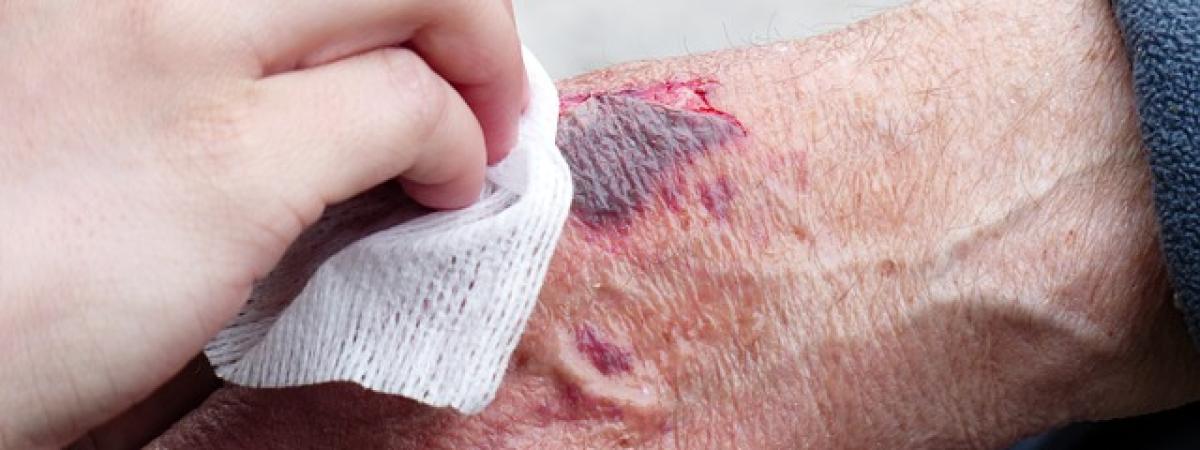Surprising ways to heal wounds
published in Reader's Digest,
09 September 2018

Modern wound care boasts some 3000 dressings, helping heal wounds caused by surgical procedures, pressure damage, accidents, infection and more. Some are quite surprising.
Over the centuries, some wound dressings have fallen out of favour whilst others have remained popular.
Historical wound dressings
One of the earliest wound dressings, used by the ancient Sumerians, was beer; honey was also in use well before the time of Christ. The Egyptians used honey, grease and lint to make plaster; they even painted wounds green with copper, now known to kill bacteria. The Greeks washed their wounds with vinegar and wine.
In her book entitled ‘Grandma’s Remedies’, journalist Cherry Chappell describes how wounds in the Second World War were sometimes stuffed with moss to staunch the bleeding, whilst garlic and thyme have been used as antiseptics. Crushed cabbage leaves, spiders’ webs and raspberry leaves also feature as traditional (but not scientifically validated) treatments.
Modern wound dressings
Here are some of the most interesting.
Honey
Honey has withstood the test of time and is in use today for infected wounds. It works wonders through antimicrobial, anti-inflammatory and deodorizing effects. It also helps remove dead tissue.
Iodine
Iodine is a powerful antiseptic, and has been used in wound care for more than 170 years. In the First World War, Alexander Fleming (who later helped discover antibiotics) found that iodine could help prevent gangrene in soldiers’ wounds.
Silver
Silver is another antimicrobial. The National Institute for Health and Care Excellence suggest it for specialist use only, recognising that in some cases it can actually slow wound healing.
Seaweed
Natural elements found in seaweed are spun into soft felt and rope dressings which are used to pack wounds and absorb fluid that seeps from the wound bed. They help promote a moist microenvironment for the wound, known to be ideal for healing.
Charcoal
When wounds have pervasive bad smell because they are infected, it can be very distressing. Charcoal can help absorb the odour.
Tar
In psoriasis, red flaky patches appear on the skin as skin cells are replaced too quickly, building up. Tar products can turn down the itch and inflammation.
Maggots
The magic of maggots was discovered in the First World War, when it was observed that maggot-infested wounds healed more quickly, because the maggots clear away the dead tissue and allow healing to begin.
Helping yourself to heal
When it comes to wound healing, you can sometimes help yourself to a certain extent: elevating your legs, for example, can reduce swelling associated with leg ulcers. More generally, dehydration and poorly controlled diabetes are two big dangers for wounds. Hydration helps the healing process by delivering oxygen and food to the wound bed; diabetes can slow healing through infection, reduced circulation and sensation. It’s important then to drink enough fluids and to keep a close eye on your blood sugars if you are diabetic.
Gentle exercise, a healthy diet – and even getting enough sleep can also help.
